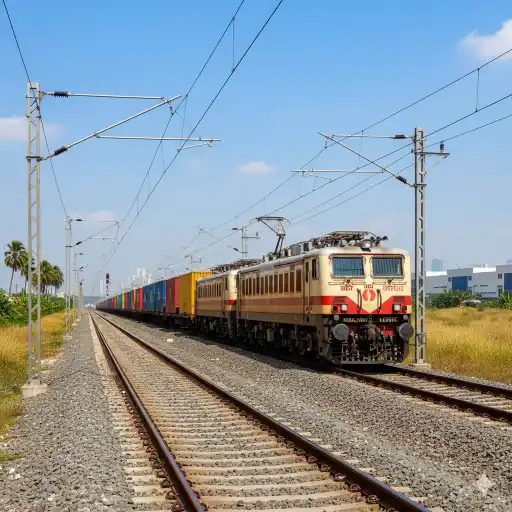A decade ago, Indian Railways was slow, congested, and struggling to keep pace with freight demand. Today, it’s powering one of the quietest logistics revolutions in the world.

Backed by Dedicated Freight Corridors (DFCs) and record wagon production, India has now overtaken the United States and Russia in total freight movement. Global data for FY 2024–25 shows Indian Railways moving 1.6 billion tonnes of goods — second only to China’s 4 billion tonnes. The US handled 1.5 billion, and Russia about 1.1 billion tonnes in the same period.
Just a year earlier, India had transported 1.46 billion tonnes, trailing slightly behind the US. The jump reflects not only infrastructure upgrades but also the growing reliability and capacity of India’s rail freight system.
The Freight Corridor Effect
The turning point has been the Dedicated Freight Corridor project — a massive effort to create an all-electric, broad-gauge freight network stretching over 2,800 km. Nearly 96 percent of the corridor is now operational.
Two main arteries form the backbone:
- Eastern DFC (1,337 km) – from Ludhiana, Punjab, to Sonnagar, Bihar.
- Western DFC (1,506 km) – from JNPT in Mumbai to Dadri, Uttar Pradesh.
These lines are designed purely for goods trains, cutting delays, boosting speeds, and freeing up passenger lines. Average freight train speeds have now doubled to 50–60 km/h, compared to 20–25 km/h earlier.
The DFC story began in the early 2000s but gathered real momentum only after 2014. By 2019, the first sections were commissioned, and by early 2024, the Eastern Corridor was fully complete. As of mid-2025, only a short 102-km stretch between Vaitarna and JNPT remains under construction on the Western line.
Growth by the Numbers
Since the DFC rollout began, freight loading has climbed from 1.22 billion tonnes in 2019 to 1.62 billion tonnes in 2025. Growth rates that once hovered around 3–5 percent a year are now consistently above 5 percent, touching 8 percent in some years.
The system now runs over 325 freight trains daily, a 60 percent jump from pre-DFC days. The EDFC plays a key role in ensuring timely coal delivery to power plants, while industrial and agricultural goods dominate Western Corridor traffic.
Global Context
India’s progress stands out when compared to the world’s top rail freight networks.
- China operates 4,000 km of freight-only corridors within a 162,000 km network.
- The US, despite having over 220,000 km of tracks, mixes freight and passenger traffic without dedicated freight lines.
- Russia’s 105,000 km network, including the Trans-Siberian route, also serves both passengers and cargo.
By building purpose-designed corridors, India is achieving freight efficiencies usually seen only in highly industrialized economies.
Why It Matters
The DFCs are doing more than just moving cargo faster. They’re shifting freight away from roads, cutting logistics costs, and opening up access for industries in smaller cities. Over time, that means cleaner transport, fewer delays, and a stronger backbone for India’s manufacturing and export goals.
The numbers tell one story. The bigger one is this: Indian Railways, once a symbol of slow bureaucracy, is now the second-largest mover of goods on rails anywhere on earth — and it’s not done growing yet.
